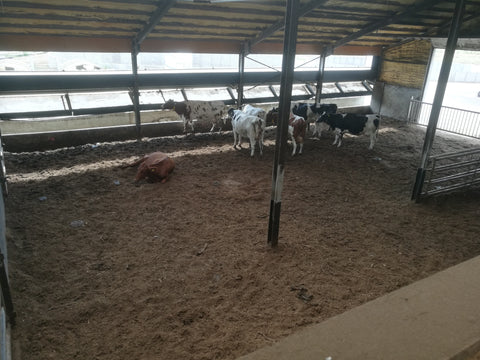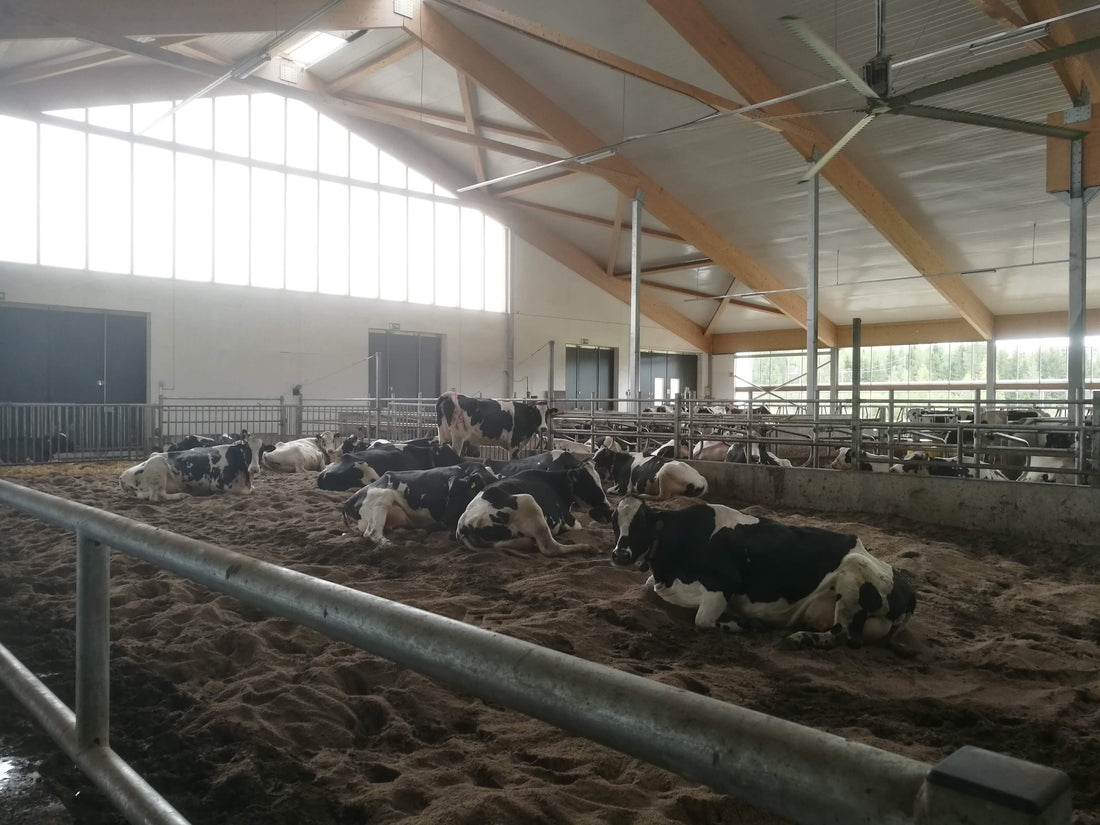-
VIC-group (close-up and fresh cows) in bedded pack area. The target was to move cows to bedded area at least one week before calving. The cows calved in the close-up group and were then moved to fresh cow group next to them. Depending on farm routines, the fresh cows were moved to the milking group from one week to one month after calving.
-
Bedded pack maternity pen. These farms moved cows to the calving pen approximately one day before estimated calving. After calving they were moved to the milking group within a day from calving if the cow was healthy enough to be moved.
-
Dry cows in bedded pack area. In these farms the cows were in the bedded area a whole dry period or half of the period. The farms fad either a separated calving pen in the bedded area or the cows calved in a dry cow group or a separate close-up group. Transfer to the milking group happened soon after calving if possible, just like in barns with a maternity pen only.

Dry cows in bedded pack
Within our survey, these strategies can’t be put in rank order. Building bedded pack area means you need more space for the transition cows compared to a transition cow group in stalls because a cow needs at least 10-12 m2 bedded space. Bedded pack space is simpler to build because it doesn’t have stall equipment.
VIC-group as an option
We in 4dBarn believe that the VIC-group increases cow comfort. Dry and clean bedding adds comfort and non-slippery bed helps close-up and fresh cows lay down and stand up more comfortably. Smaller animal group prevents stress and ensures easier monitoring of health than in a big milking group. 24/7 access to the robot gives heifers a possibility to learn to use the robot independently from a smaller group first. This spares labor time, when people don’t have to catch cows to the robot from bedded pack area every day. It is a way to try to ensure that the cows don’t learn that someone catches them every time they should be milked.
 Fresh cows on sand bedded pack
Fresh cows on sand bedded pack
A space reserved for fresh cows in a bedded pack area gives flexibility during times when there is a calving rush and more cows in transition facilities than on average. When the cows are kept routinely a longer period in bedded area, there is always a possibility to move some cows to the milking group earlier to make room for new fresh cows if necessary.
When using only maternity pen, the facilities must be big enough to tolerate even the calving rushes. Even though most cows are ready to be moved to the milking group, there are always some who recover slowly from the calving. When there is little flexibility, there must be more loose space in reserve to survive the calving rushes.

A calving pen
Inspiration from America
Farmers have different starting points and practices in transition cow management so one solution won’t necessarily work for some other farmer. University of Wisconsin maintains a Dairyland Initiative website which offers plenty of knowledge and solutions for transition cow management from American point of view. You can also find calculators to aid you in designing phase. It’s worth to invest in transition cow facilities because it will pay back in improved milk yield and lesser cow culls.


